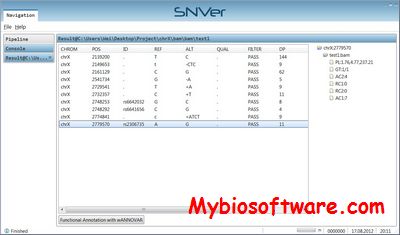SHOREmap 3.6
:: DESCRIPTION
SHOREmap is an extension of the short read analysis pipeline SHORE. SHOREmap supports genome-wide genotyping and candidate-gene sequencing in a single step through analysis of deep sequencing data from a large pool of recombinants. SHOREmap requires aligned sequence data from a pooled mapping population. Based on the read count at marker positioning distinguishing the parents it regonizes regions with skews in the allele distribution. Annotating the changes within this interval rapidly leads to causal changes.
::DEVELOPER
KS’ Research Group / DW’s Research Group
:: SCREENSHOTS
N/A
:: REQUIREMENTS
:: DOWNLOAD
:: MORE INFORMATION
Citation
Nat Methods. 2009 Aug;6(8):550-1.
SHOREmap: simultaneous mapping and mutation identification by deep sequencing.
Schneeberger K, Ossowski S, Lanz C, Juul T, Petersen AH, Nielsen KL, Jørgensen JE, Weigel D, Andersen SU.


